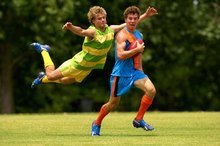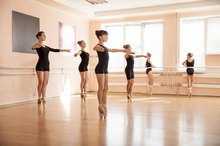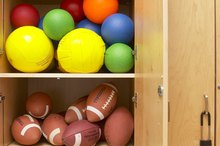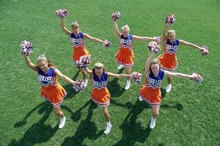What does fact checked mean?
At Healthfully, we strive to deliver objective content that is accurate and up-to-date. Our team periodically reviews articles in order to ensure content quality. The sources cited below consist of evidence from peer-reviewed journals, prominent medical organizations, academic associations, and government data.
The information contained on this site is for informational purposes only, and should not be used as a substitute for the advice of a professional health care provider. Please check with the appropriate physician regarding health questions and concerns. Although we strive to deliver accurate and up-to-date information, no guarantee to that effect is made.
Reasons for Lack of Exercise in Teens
Approximately 50 percent of young Americans aged 12 to 21 lack a regular, vigorous activity routine, according to the Centers for Disease Control and Prevention 2. Children and teens need regular exercise for strong muscles and bones, fewer health problems and a reduced risk for obesity. Identifying the exercise barriers than keep your teen from being active allows you to help her become more physically fit.
Less Physical Education
A decrease in the amount of physical education time in schools contributes to less teen exercise. According to the Centers for Disease Control and Prevention, about 19 percent of teens in high school participate in a daily physical education class lasting at least 20 minutes 2. If PE class is the primary source of exercise for a teen, he does not get enough regular daily exercise. In some cases, teens are able to opt out of PE or are only required to take it during certain semesters, meaning he could go for long stretches of time without any exercise during the school year.
- A decrease in the amount of physical education time in schools contributes to less teen exercise.
- In some cases, teens are able to opt out of PE or are only required to take it during certain semesters, meaning he could go for long stretches of time without any exercise during the school year.
More Technology
The Importance of Physical Fitness as a Teenager
Learn More
Computers, TVs, video games, and smart phones promote a sedentary lifestyle. Daily hours in front of a screen is a common teen schedule. An online Skype or social media chat replaces a walk to a friend's house and an active get-together. Video games replace neighborhood pick-up games. Teens who spend long periods of time online or on the sofa watching the tube, miss out on valuable exercise and fitness activities.
- Computers, TVs, video games, and smart phones promote a sedentary lifestyle.
Missing Motivation
Like adults, teens often lack the motivation or desire to exercise. If physical fitness hasn't been a valued activity in the family, a teen is less likely to put forth the effort or find the motivation to exercise. If the teen is overweight or feels self-conscious about her physical abilities, she may also feel less motivated to exercise. Some teens in this situation feel embarrassed to exercise in public.
- Like adults, teens often lack the motivation or desire to exercise.
- If the teen is overweight or feels self-conscious about her physical abilities, she may also feel less motivated to exercise.
No Access
Exercise Programs for Children Ages 12 to 14
Learn More
Teens also need access to exercise equipment, sports teams or space to perform fitness routines. A lack of access makes it more difficult for the teen to exercise regularly. When access to physical fitness equipment or space is limited, helping your teen find creative ways to exercise is a way to overcome the barrier. Scheduling conflicts are also possible roadblocks for accessing the tools needed to stay physically active. If a teen has lots of homework, works a part-time job or carries much of the household responsibilities, he may find it difficult to make time for exercise.
- Teens also need access to exercise equipment, sports teams or space to perform fitness routines.
- When access to physical fitness equipment or space is limited, helping your teen find creative ways to exercise is a way to overcome the barrier.
Related Articles
References
- The Sports Journal: How Teens & Adults Feel About Physical Activity & Physical Education: A Survey Conducted for NASPE
- Centers for Disease Control and Prevention: Adolescents and Young Children
- Centers for Disease Control and Prevention. Physical activity: Children. Updated April 10, 2020.
- Harvard School of Public Health. The nutrition source, physical activity guidelines: How much exercise do you need? Updated November 20, 2013.
- KidsHealth by Nemours. Fitness and your 13-to 18-year old. Updated June 2019.
Writer Bio
Based in the Midwest, Shelley Frost has been writing parenting and education articles since 2007. Her experience comes from teaching, tutoring and managing educational after school programs. Frost worked in insurance and software testing before becoming a writer. She holds a Bachelor of Arts in elementary education with a reading endorsement.









